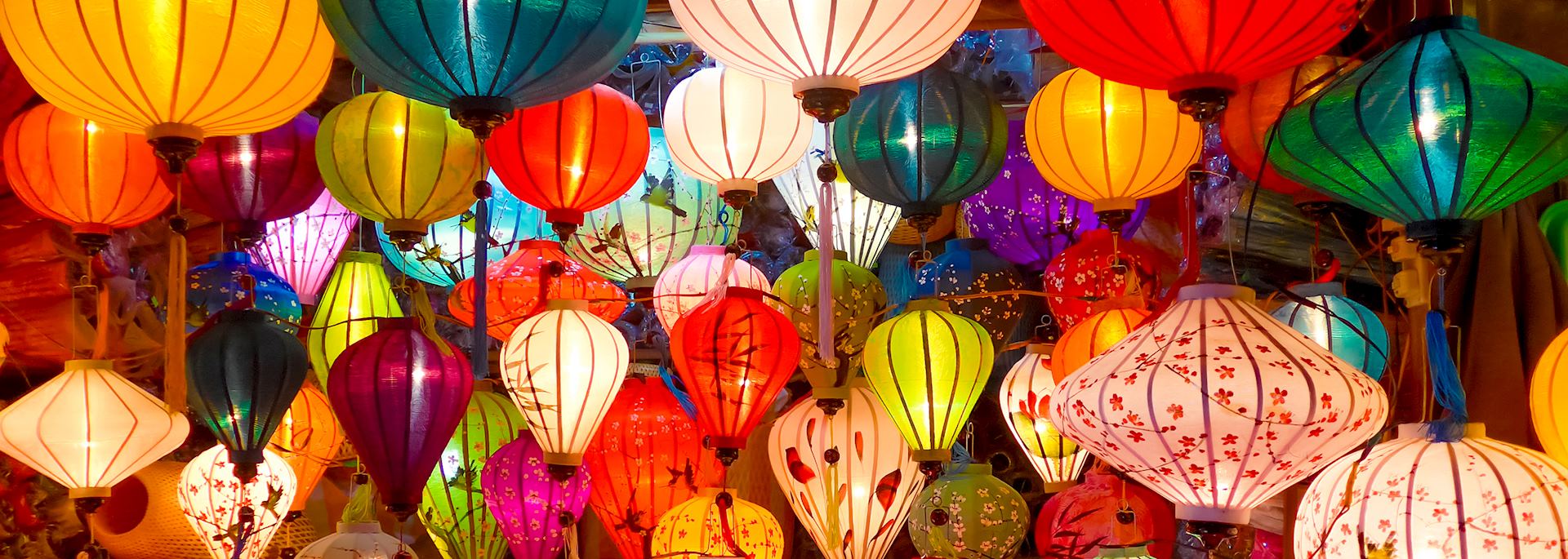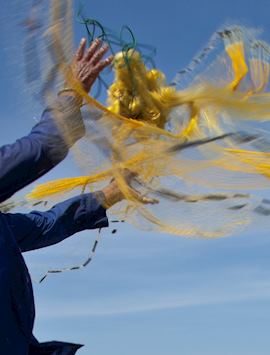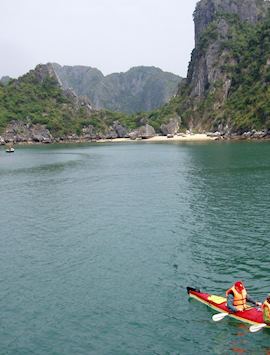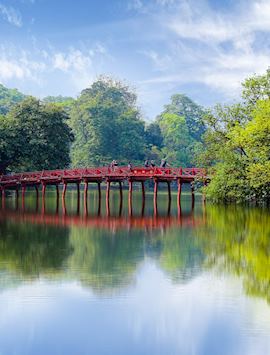By Vietnam specialist Gareth
Whichever type of holiday you're looking for as a family, I think Vietnam would find an answer. That's whether you want ocean cruising and lying on the beach, or if you'd relish the adventure of trekking off-the-beaten-track and staying with a Vietnamese tribe in the central highlands.
Flight times and transfers are also kind on families. Getting to Vietnam involves either a direct flight or flights broken up with a short stopover in Hong Kong, Bangkok or Singapore.
Once in Vietnam, travel is uncomplicated. The country has been well versed in welcoming foreign travellers for the past 20 years. It's very easy to navigate and get around, which opens up the entire country to you. Regular internal flights offer access from Hanoi in the north to central Danang and Ho Chi Minh City in the south.
I'd suggest travelling from north to south. There are more beaches along the coast in the south, so after the cultural highlights and activities of the north you can finish your trip by relaxing in the sunshine.
Hanoi and Vietnam’s north for families

Hanoi is an excellent place to start a trip in Vietnam. It works as a central base for the region, and my other recommended experiences in northern Vietnam are no more than four hours away by car.
Unlike the business-orientated metropolis that is Ho Chi Minh City it's a lot more of a Vietnamese city. The old quarter's narrow streets and alleys are a joy to wander.
Come the evening, all the locals condense into the old quarter and you walk through an electric atmosphere — nothing quite says 'welcome to Vietnam' like street food and live music.
You can start absorbing Hanoi's culture and learn a taster of its history on a city tour, which is an introduction to the city's colonial architecture and explores sites like Ho Chi Minh's mausoleum.
The Silk Path is a wonderfully located hotel, right in the heart of the old quarter. It offers great value, as well as all the modern facilities.
From Hanoi you can then branch out into the wider area such as Halong Bay and the countryside.
How to explore Halong Bay as a family

Filled with traditional Vietnamese junk boats, Halong Bay is a four-hour drive from Hanoi and is known for its thousands-strong limestone islets scattered around the bay.
I'd recommend hiring your own private junk boat, available with four cabins or more. And while most people opt for one night/two days, I'd suggest staying for a two-night cruise to give you more time and space to explore the lesser visited fishing villages and beaches when the vast majority has left for the day (and to avoid the there-and-back to Hanoi on consecutive days).
This also gives you the flexibility not just to explore, but to jump into the water and go for a swim, to kayak, or to walk on the islands.
Going off-the-beaten-track in Halong Bay
Only a few islands are accessible in Halong Bay because most are too small and sheer, so you simply cruise past as they tower above you.
However, the largest island, Cat Ba, is popular as you can walk up to a viewpoint with panoramic views across the bay. Flotillas of boats do descend here at pressure points in the day, which can take away some of the charm.
My favourite part of the experience, which happens on the second day, takes you further out to the fishing villages in Bai Tu Long, the next bay along the coast.
Only a few of the boats have a licence to go there and the scenery is much the same, but it's less visited and much quieter and the residents are genuinely thrilled to see you. As I kayaked in one evening, the local children performed backflips into the water in excitement.
The truly authentic villages are on the decline but you’ll find them with a little more time investment. When you look around, the tourist dollar holds little sway and the inhabitants are still making a living from the fish in the bay.
Exploring northern farming villages

One place I fell in love with recently in Vietnam was Mai Chau. A small town and farming community about four hours from Hanoi, it's not difficult to get to but it nestles at the bottom of a valley among rice fields and mountains. For a family, exploring here is an adventurous, yet relaxed part of the trip.
Thanks to the microclimate, the farmers can harvest the rice twice annually and it's incredibly verdant for much of the year.
From Mai Chau, you can walk out with a guide to visit the surrounding minority villages where H'mong, Black Thai and White Thai tribespeople live.
Cycling around the villages at evening time, you see the farmers coming in from a hard day's work in the sun with the rice on their backs.
About 15 years ago, Mai Chau was an unknown farming village, and although it's more popular now it's not to the extent that it's taken its glow away.
For all visitors, but especially families, it's one of those places you can base yourselves for two or three nights and explore at your own pace — trekking, bamboo rafting or kayaking on the lakes — or with a guide if you want to go further afield.

The Mai Chau Ecolodge, overlooking the rice fields, is a good place to stay for families, as it offers full board.
Bicycles are available to borrow and the lodge is only a 10-minute walk from the nearby village of Ban Lac. That's the hometown of the lodge's owner, who'll happily take you to meet her friends and neighbours.
I particularly recall the day’s end at the lodge. Our balcony looked out over acres of rice paddies which gathered the faint glow of the departing sun as it dipped behind the mountains. I remember thinking that I must grab my camera to try and capture the illuminated greenness, but the view held me captive for 20 minutes as the sun went down.
Hoi An in central Vietnam

An hour's flight to Danang in central Vietnam and Hoi An is one of the main attractions.
Hoi An is a fishing port that goes back about 500 years and has traded with the French, Dutch, Portuguese and Chinese over time, all of whom have left their mark on it, particularly in terms of the architecture.
The beautiful Japanese covered bridge dating back to the 1590s, built a few yards from a colonial villa, is a good reminder of the changing face of Hoi An.
Hoi An also happens to be blessed with about 15 km of white sandy beaches on its doorstep.
I'd choose a three or four-night stay at Boutique Hoi An, where I've found the service and quality of accommodation second to none.
The hotel organises activities for children, and Hoi An is just 10 minutes away for eating out and just ambling.
The old town's cobbled streets are traffic-free and easy to navigate on your own, but it's wise to get an initial feel for them on a walking tour on your first morning to fix your bearings. In the afternoon you can hire bicycles to tour the surrounding countryside and villages.
Discovering tribal life in Vietnam

Also in central Vietnam is the village of Bho Hoong, around three hours' west of Hoi An. It's inhabited by the Co Tu people, who have not long been exposed to outsiders.
Here, you can stay overnight and get a true feel for what centuries-old tribal life in Vietnam entails. The people may now have adapted to modern day life but their pastimes and traditions remain the same. Some activities such as trekking and archery can be experienced for yourselves.
Typically, you'll be greeted by the village elders in their tribal dress, and shown around the village. A number of children live in Bho Hoong who your children can meet.
Over the course of the first afternoon you'll settle into your lodge and have the chance to trek out into the surroundings. Lodges are basic, but clean and comfortable.
You're then hosted at a tribal dinner that caters to all tastes, so there's always something for the children. Sticky rice and an array of cooked meats are a popular choice washed down with homemade brew.
In the evening, outside in the centre of the village, the Co Tu performs tribal dances around the fire, a tradition that you don't really experience elsewhere in Vietnam. In conversation, through your guide, they'll describe how they survive, upholding a way of life that’s little altered for hundreds of years.
Relaxing in central Vietnam

While Hoi An is a good opportunity to relax, the horseshoe-shaped beach at nearby Lang Co makes for a really good loop in your travels around central Vietnam. It's around two hours from Hoi An.
Staying at the Angsana, the beach has in my opinion some of the best sand in Vietnam, fine, white and contrasts nicely with the deep blue ocean. The resort has a number of water-based activities on offer, a large golf course and a 300-metre pool that snakes its way around the resort.
Ho Chi Minh City and south Vietnam for families

Ho Chi Minh City would be your first port of call in the south. An apt way to explore a city populated by more scooters than people is on the back of a Vespa.
Winding through the streets of Ho Chi Minh City at night is suitable for children as young as four or five. Your safety is paramount and your guide will equip you with everything you need to sit back and enjoy this exhilarating ride. You’ll negotiate the sprawling city streets, stopping at hand-picked, local restaurants and music venues, as well as being given the opportunity to sample local street food.
The Cu Chi tunnels, a set of underground passages used during the Vietnam War, are also worth a visit, and are easy to stop at on the way to Ho Chi Minh City from the airport.
Ho Chi Minh City is also your gateway to the Mekong Delta and its thousands of narrow waterways. One of the best ways to explore with your family is on a two-day cruise aboard one of the Bassac fleet of traditional wooden boats.

These vessels are fairly small, some with only six cabins, and can manoeuvre around the smaller tributaries of the Delta with ease.
The backwaters are home to Viet and Khmer minority villages where you can moor for a while. I was invited into a local home for afternoon tea on one visit. The children of the family had just returned from school and ran around delighted to have a guest.
In this area of Vietnam there are three harvests a year, so local communities are always farming, often trading their produce at the Cai Rang floating market.
Cai Rang market is the biggest floating market on the Delta and takes place just outside of Can Tho, the capital of the Delta region.
On the second morning of your cruise, you can join the hundreds of vendors who come here to haggle and trade in all manner of foods. The best time to experience the market is at dawn when it's at the height of activity.
Rice and exotic fruits are piled high on the boats, as well as Vietnamese peculiarities such as fried frog.
As I mentioned earlier, ending your journey in the south allows you time on Vietnam's southern beaches.
Best time for a family holiday to Vietnam
The weather is also a big consideration for families, with the best time to visit Vietnam generally falling from March through to June. Central parts of Vietnam are also on a weather high during the summer holidays.
Start planning your family trip to Vietnam
Start thinking about your experience. These itineraries are simply suggestions for how you could enjoy some of the same experiences as our specialists. They're just for inspiration, because your trip will be created around your particular tastes.
View All Tours in Vietnam




